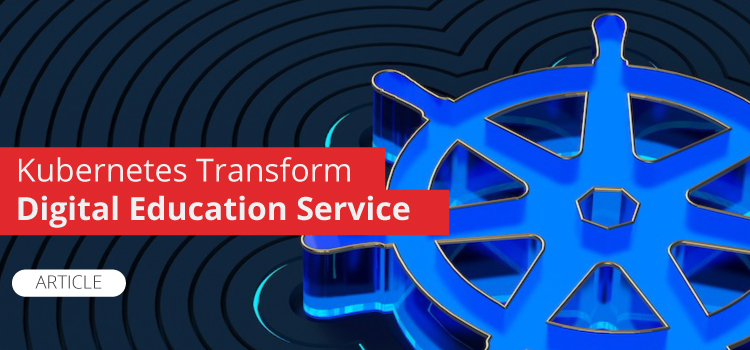In the past decade the education industry has evolved immensely from writing on black boards to teaching concepts via Augmented or Virtual Reality tools. The classroom experience is now taken over by various Edutech applications across the world which empower students with real world skills apart from imparting them structured textbook knowledge. Emerging technologies have created a disruptive change in the education industry.
With technology, a student in a small town in Asia can learn from a top institute in the US. Emerging technologies like Machine Learning, Cloud Computing with the use of open-sourced container orchestration programs help in automating a lot of manual processes and enables cloud computing. Kubernetes clusters can function across on-premise, public, private, or hybrid clouds. For this reason, Kubernetes is considered one of the ideal platforms for hosting cloud-native applications that transfers physical resources to virtual ones.
Cloud Computing and machine learning is a set-up of computing networks that can be shared anywhere by being location agnostic. Kubernetes with their clusters can make this process simpler and make it a reality to bring teachers and learners together on a unified platform. Educational institutions need not invest heavily to purchase their own data centres, now they can save costs by uploading algorithms on cloud. They could compute power, access databases by identifying unique clusters, storage on cloud with the help of Kubernetes clusters and open-source access.
Below are the pointers that elaborate extensive ways Kubernetes can transform education industry:
- Creating robust virtual classroom environments: Cloud based softwares have made it possible for educational institutes to have virtual classrooms. This reduces the cost to a great extent and by deploying Kubernetes the data scientist can add multiple additional functions by creating independent data clusters in the open-source network of cloud. These clusters can store data from numerous lectures of teachers, designs of virtual exams in the cloud separately. In case if there is a malicious attack only one cluster gets damaged and other clusters are safe.
- Easy accessibility: Cloud has immense potential when it comes to accessibility. The IT team can easily curate and access content, applications, and data anytime by accessing it through different clusters. Students on the other hand, can enrol in courses and participate in group activities as well, with ease and without any technological glitch. The barriers of place and time are non-existent; the cloud ensures seamless delivery of content at all times. Additionally, it even sends across content on mobile devices so that students can easily learn even while on the go.
- Cost effectiveness: Kubernetes while deploying into the cloud and other applications can be costly. But after the deployment into cloud applications further need to incur any costs is minimal. Especially purchasing space to store data into it. Institutes and Education platforms too can reduce the management costs by simplifying processes such as enrolment and assignment tracking. Adding to it, the infrastructural costs are reduced too. The best part about cloud computing is that it is a one-time cost and few maintenance pay-outs, which makes it cost-effective.
- Secure data storage: Apart from accessibility and saving huge costs, Kubernetes enables cloud computing applications with the benefit of secure data storage. Organizations that deliver learning through the cloud can avail a VPN to ensure data security. VPN systems such as IKEv2 automatically encrypt outgoing data and traffic. This means that the content can be easily transferred to the users without tampering with its integrity. At the same time, learners’ privacy is protected by using VPN for cloud-based learning applications.
- Scalability: Scalability is the ability of the applications to match the growing numbers of users. Kubernetes in the cloud can create clusters that can accommodate users in one single cloud application. Thus, Cloud computing covers the schools, colleges, and universities on this front as well. It enables them to scale up the learning applications and experiences easily. As a result, they can accommodate an increasing number of students. Lastly, scalability also helps them to manage the power surge, usage peaks and traffic spikes caused due to events like registrations and uploading assignment submissions. Similarly, they can scale down instantly during the low activity period to prevent wastage of resources.
Thus, there are countless ways in which Kubernetes can scale up and create space for enrolment of a large number of users and also after some time, emerging technologies such as Machine Learning and AI can be plugged in to create more customised courses and interactive content for students.












